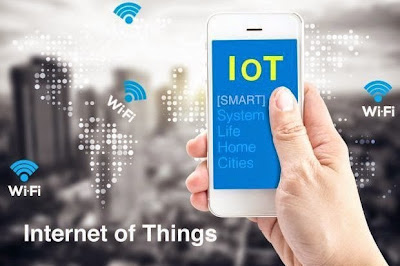 |
| Wi-Fi of Thing : Internet of Things |
With projections of more than 5 billion connected devices by the end of this year and growth to 50 billion by 2020, the challenges facing the Internet of Things (IoT) include a lack of standardization, security, integration, battery life, and rapid evolution. Wi-Fi, in its 16th year, is getting ready for IoT and will perhaps make the most suitable network for the technology.
Why Wi-Fi will be the technology of choice for the Internet of Things
Of the hundreds of TED talks available online, many are geared toward helping people view life in a new. Enjoy all night and day with internet TV like Android TV Box
IoT may be a recent buzzword, but the quest for connected things is old. Very old. Caller ID, connected Coca-Cola vending machines, M2M, smart meters, RFID, AutoID, etc. The whole appeal of connected things has been efficiency and experience. And the desire for experience and efficiency is even greater today.
We live in an experience era and have no patience. We expect 'great experience' and 'efficiency' around us. Only IoT can enable that. IoT is nothing but an intelligent and invisible network of things that communicate directly or indirectly with each other or the internet to enable experience and efficiency. Internet can connect to the World via Android TV Box
Here are some of the challenges facing the IoT, and how Wi-Fi can help address them.
IoT needs a standardized technology for connecting devices to each other or the cloud
The things (as in Internet of things) typically employ some kind of embedded technology that allows them to sense conditions such as pressure, humidity, temperature, motion, number of people in an area, etc. And then a technology allows them to connect to other things or the cloud so that they can send the information as well as be programmed.
There are many standards and proprietary solutions used for connecting things to each other or to the cloud: Wi-Fi, Bluetooth, ZigBee, Active RFID, loWPAN, EtherCAT, NFC, RFID to name a few. The choice of technology is usually dictated by the physical characteristics of the environment, such as the presence of wood, concrete, metal etc., the density of sensors, desired range, and data rates.
Among these technologies, Wi-Fi has been the most successful. It has become a ubiquitous standard of connectivity and is used in the home, enterprise, schools, hospitals, airports etc.
However, as the number of devices connected to a Wi-Fi Access Point or the distance of device to Access Point is limited, many Active RFID technologies that operate in sub 1-GHz bands are used for things too. Active RFID technologies allow a large number of devices as well as larger ranges.
To overcome these challenges, a new IEEE Wi-Fi standard 802.11ah using the 900MHz band has been in works and will solve the need of connectivity for a large number of things over long distances. A typical 802.11ah access point could associate more than 8,000 devices within a range of 1 km, making it ideal for areas with a high concentration of things. The Wi-Fi Alliance is committed to getting this standard ratified soon. With this, Wi-Fi has the potential to become a ubiquitous standard for IoT.
And, not to mention, the growth of the IoT has just started. We are rapidly evolving, but there is a lot of unknown. Unknown applications, unknown devices, and unknown use cases. The best way to proceed is using one common worldwide standard for technology and application programming interfaces that can get these devices to talk to each other and to the cloud without networking infrastructure upgrades.
Standardization and implied interoperability is one of the main reasons Wi-Fi is very popular, and that's another big reason that it is suitable for the IoT.
Needs of security and protecting privacy in the borderless world created by IoT are real
IoT creates a borderless world where things talk to the cloud. Network or device administrators may not even realize the firmware or operating systems of these things or the cloud applications that these things talk to. In other words, protecting privacy and preventing malicious activity will be a challenge.
One may not even know what other information these things will send or how that information is used. Too many cloud apps, too many APIs, too many hackers out there. For security and policy enforcement, SDN is the most natural solution, and in the last couple of years, a good effort has happened in the industry around SDN (software-defined networking) enablement of Wi-Fi. With SDN, Wi-Fi enables unified policy management as IoT device traffic can be scanned and secured at the network entry point.
Without energy efficiency, maintenance overhead of things will be too substantial
As most of these things need to be portable or self-sustaining, stretching battery power or harvesting energy is almost a must. The battery change cannot be required every few days or weeks. And batteries should be preferably using solar like Solar Lamp (โคมไฟพลังงานแสงอาทิตย์,โคมไฟโซล่าเซลล์ หรือ ตะเกียงไฟฟ้า) or Solar Light, wind, thermal, and other energy mechanisms.
Significant efforts in the industry have been going on for many years to make Wi-Fi low power, and many vendors now specialize in low-power Wi-Fi chipsets. Additionally, 802.11ah helps with lower-power consumptions and most recent innovations around backscatter Wi-Fi can enable a no-power or battery-assisted low-power Wi-Fi.
At this point, Wi-Fi appears to be the most suitable choice for the IoT as it has the potential to address all the challenges. I would love to hear your feedback about this.
Cr.Network World
No comments:
Post a Comment